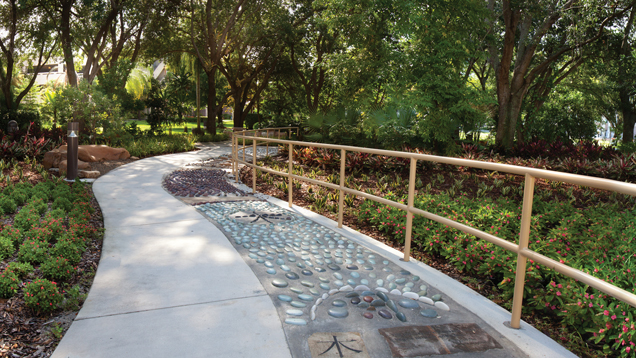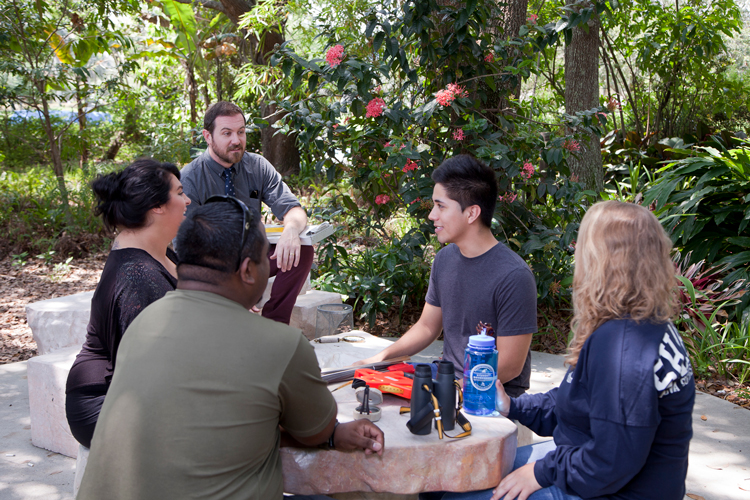Every morning in Asia, millions of people walk reflexology paths to enhance their well-being and to reduce chronic pain. Research lauding benefits of reflexology concludes that walking indoor cobblestone mats lowers blood pressure and improves balance (Journal of American Geriatrics Society, 2005).
In April, 2010, Nova Southeastern University unveiled the first foot reflexology pathway built on the U.S. East Coast situated in the University's Healing & Medicinal Garden. Guests were offered educational tours and barefoot walks throughout the Garden and Pathway. University President, George L. Hanbury II, Ph.D., and NSU's Barry and Judy Silverman College of Pharmacy Dean Andrés Malavé, Ph.D., noted in their inaugural addresses that the NSU Medicinal & Healing Garden marks the commitment of the University to wellness and integrative medicine.
Carsten Evans, Ph.D., Director - Continuing Education at NSU's Barry and Judy Silverman College of Pharmacy, is responsible for the vision, action plan and finances of incorporating the reflexology pathway and the healing component into a decaying weed over run medicinal garden. After cleaning the grounds back to fifteen original medicinal plants, he commissioned Elizabeth Marazita of Geneva, Switzerland to design the reflexology pathway. She arrived in early January with her installation team to lay special stones from Mexico, Peru, China, India and Tennessee in patterns to address the science of foot reflexology. Jesse Durko, of international landscape fame, was commissioned to create a support setting of rare and unusual plants that would enhance and promote healing through the senses of smell, sight and sound (eg. spices, mints, brilliant plant colors, bamboo, chimes and waterfalls).

Situated in the heart of the NSU Medicinal & Healing Garden is the 66-foot therapeutically stone-studded Reflexology Pathway. The principles of reflexology are based on the ancient Eastern study of healing oneself by stimulating various pressure points on one's feet by walking on an intricate pattern of stones. The Pathway reflects the theme of the five Chinese Meridian elements, water, wood, fire, earth, and metal, each representing a season, an organ system, and a color.
The Medicinal & Healing Garden is graced with tropical plants from around the world
with medicinal qualities making it an international living classroom. Some plants
were chosen for their visual qualities with a design to pique the eye, others for
their fragrances, and some for their natural harmony with butterflies and birds. A
Yin/Yang pattern of plantings, around the Reflexology Pathway, represent the Eastern
philosophy of balance.
The Garden and Pathway island within the NSU complex, just west of the Alvin Sherman
Library & Information Technology Center, behind the Parker Building, invites both
students and visitors for a unique healing and learning experience. It is a destination
that can tantalize the senses and heal the body while calming the soul.
For individual or group tours and/or information about giving opportunities, contact Carsten Evans, Ph.D.: carsten@nova.edu, (954) 262-1306.


